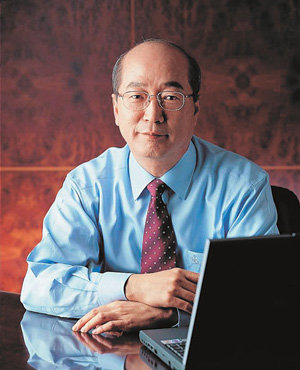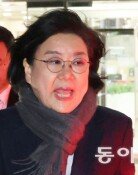Letters from the CEO

In the summer of 1998, when all the society was reeling under the International Monetary Fund (IMF) crisis, the Cheil Industries Renovation mission befell construction and machinery supervising representative and vice-president of Samsung Heavy Industries Co., Ltd. Ahn Bok-hyun.
As a holding company of Samsung group, Cheil Industries faced Koreas economic highs and lows steadily, but lapsed to become a burden within the group as the company started to record continuous losses into the mid-1990s.
Following his inauguration, without time to grasp the companys situation, Ahn diligently rushed from one establishment to another, only to be dismayed by the cold and dark faces of the employees.
In their hopeless expressions, he could plainly read their thoughts that said, This company may go bankrupt at any moment, so I should just wait for my paycheck as a temporary employee.
What can I do to cure the sickness felt in the hearts of the workers and the consequently ailing company?
Ahn decided to write emails. He roused his workers, notifying them of any change in the companys current position with transparency, in order to transfer messages from the top with precision to even the female employees in the lowest of the hierarchy.
First, Ahn frankly announced that the company was in a crisis. He emphasized that imparting knowledge of the companys vision and directions to every worker was necessary to overcome the crisis, and put his words into action. His integrity gradually melted the cold hearts of the workers and fueled an atmosphere that encouraged participation in a revolution.
He publicly applauded employees who reduced costs, and appealed to abortive deficit sectors with urgent explanations. Consideration of employees was not merely lip service, but a vow to look after his juniors and dauntlessly retrospect on his own actions.
This book is a compilation of 82 emails (the original manuscript is about 7,000 pages) that the author sent to employees over the period of six years until his retirement in 2004. The devotion and passion, perspiration and aspiration of a CEO (Chief Executive Officer) who successfully transformed a flagging business are imbued into this book.
His efforts bore fruit. Just one year after his induction, the company went from 44 billion won in deficit to 48 billion won in surplus, and consecutively recorded profits: 80 billion won in 2000, 120 billion won in 2001, and 160 billion won in 2002.
His managerial methods, such as downsizing troubled sectors, structurally adjusting future businesses, education, and infrastructure innovation, amongst others, were not new ideas. Upon reading the book, however, one realizes that administration is not a problem of method, but a people problem that consisted of unifying the hearts of employees.
So-called global and multinational companies may have success stories based on innovative methods, but a company body without the understanding and participation of workers is futile. This book vibrantly proves that the beginning and end of innovation is in winning and moving the hearts of employees.
un-MyungHuh angelhuh@donga.com




![“한동훈, 정치생명 걸고 무소속 출마해 평가받는 것 고려할만”[정치를 부탁해]](https://dimg.donga.com/c/138/175/90/1/wps/NEWS/IMAGE/2026/01/19/133186982.1.jpg)


